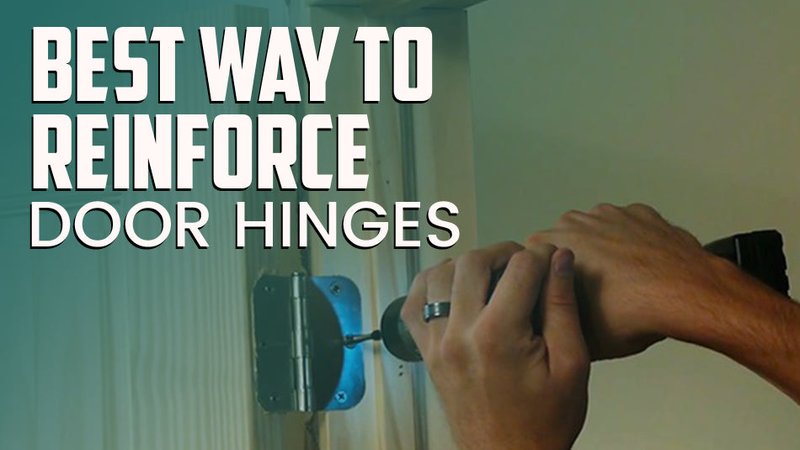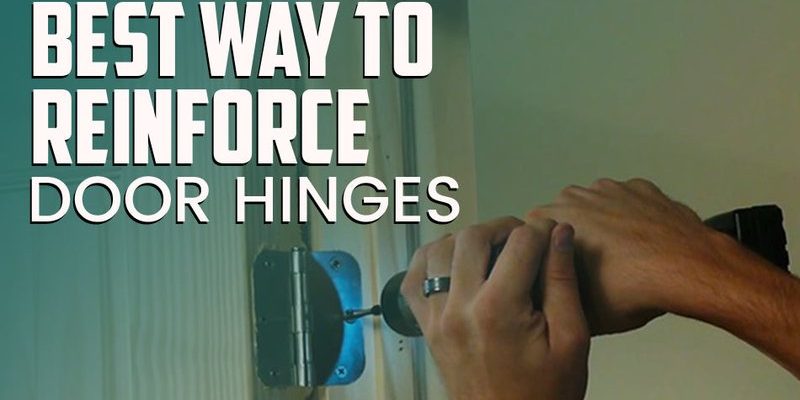
Taking a few minutes to check your door hardware can save you time and money in the long run. You might be wondering, “How often do I really need to do this?” or “What do I even look for?” Don’t worry! I’ll walk you through the process, making it as easy as pie.
Why Regular Inspection Matters
Regularly checking your door knobs and hinges is like giving your car a tune-up. Just as you wouldn’t wait until your engine fails to check it, you shouldn’t ignore small issues with your doors. Loose knobs can lead to doors that won’t latch properly, which can compromise your home’s security. Similarly, squeaky or loose hinges can cause unnecessary wear and tear, leading to costly replacements down the road.
Imagine coming home after a long day, only to struggle with a door that doesn’t open smoothly. It’s not just annoying; it can even make you feel unsafe. Frequent inspections help you catch these problems before they escalate, ensuring your home stays secure and functional.
Plus, think about the aesthetic aspect. A well-maintained door enhances the overall look of your home. Who wants to navigate through a home with doors that look like they’ve seen better days? But regular check-ups can keep things looking tidy.
Tools You’ll Need
You don’t need to be a handyman to inspect your door knobs and hinges, but having the right tools can make the job easier. Here are some basic items you might want:
- Screwdriver: A flathead or Phillips screwdriver for tightening screws.
- Lubricant: WD-40 or a similar product for squeaky hinges.
- Cleaning cloth: To wipe down knobs and hinges.
- Flashlight: To help you see hard-to-reach areas better.
These simple tools can help you spot issues that might not be visible at first glance. Even if you don’t need every tool for every job, having them on hand makes the process smoother.
How to Inspect Door Knobs
Inspecting your door knobs is pretty straightforward. Start by giving them a gentle wiggle. If they feel loose, it’s time to tighten them up. Use your screwdriver to tighten any visible screws—this could be on the knob itself or on the plate that holds the knob in place.
You might also want to look for signs of wear, like scratches or cracks. These can indicate that your knob is nearing the end of its life, and replacing it sooner rather than later can save you headaches down the line.
If your knob is sticky or hard to turn, a little lubrication might do the trick. Just a tiny spray of lubricant can make a world of difference in functionality. Give it a minute to settle, and your door knob should be working like new!
How to Check Hinges
Hinges need some love too! First, look for any rust or discoloration. If the hinges are metal and you see rust, you might want to replace them to prevent further damage. Just like door knobs, looseness is a big sign that it’s time for some adjustments.
To inspect, open and close the door a few times. Listen for any squeaks or grinding noises—that’s your hinge’s way of asking for help! For squeaks, a quick spray of lubricant can quiet things down. If a hinge is particularly loose, you may need to tighten the screws or even replace the hinge itself if it’s worn out.
Keep an eye on how the door aligns with the frame as well. If it’s rubbing or catching, it might be time to make a few adjustments to the hinges.
When to Replace Door Hardware
Even with regular inspection, some door knobs and hinges will eventually need to be replaced. Here’s when you should consider making that leap:
– Frequent loosening: If you find yourself tightening screws often, it may be a sign that the knob or hinge is worn out.
– Damaged parts: Any cracks, rust, or severe scratches are indicators that replacement is necessary.
– Malfunctioning doors: If your door jams or doesn’t latch properly despite adjustments, it’s time for new hardware.
Think of it this way: replacing a door knob or hinge is like replacing a light bulb. It can be annoying, but it’s better than dealing with a flickering light. Plus, new hardware can give your door a fresh look!
Maintaining Your Door Hardware
Once you’ve inspected or replaced your door knobs and hinges, maintaining them is key to ensuring they stay in good shape. Here are a few tips:
– Regular cleaning: Wipe down knobs and hinges every couple of months to remove grime and dust.
– Lubricate hinges: A quick spray of lubricant every few months can help keep your hinges quiet and functional.
– Tighten screws regularly: Making it a habit to check screws can prevent loose hardware from becoming a problem.
Just like you wouldn’t skip an oil change for your car, don’t overlook the little things in your home. Simple maintenance can prolong the life of your door hardware, keeping everything running smoothly.
Preventing loose door knobs and hinges is all about regular inspection and simple maintenance. Think of it as a quick check-up for your home. A few minutes spent checking these small details can save you from frustration and costly repairs down the line.
Next time you pass through a door, take a moment to give it a glance. You’ll be glad you did! Keeping your doors in top-notch shape not only improves functionality but enhances the overall look of your home. So grab your tools, set aside some time, and let’s keep those doors happy!
